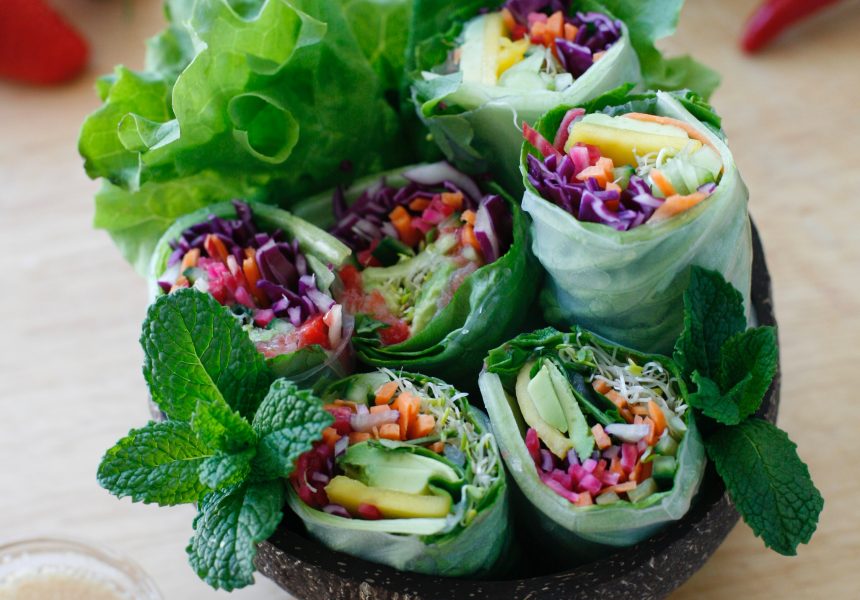This rhubarb shrub makes a really nice and simple spring cocktail when you mix it with ice, gin, and soda water. I recommend adding a sprig of thyme for extra spring freshness. Rather than talk your ear off about it, I’ll just leave the recipe here, encourage you to give it a try, and walk back to my Saturday afternoon gin drink in the yard…..
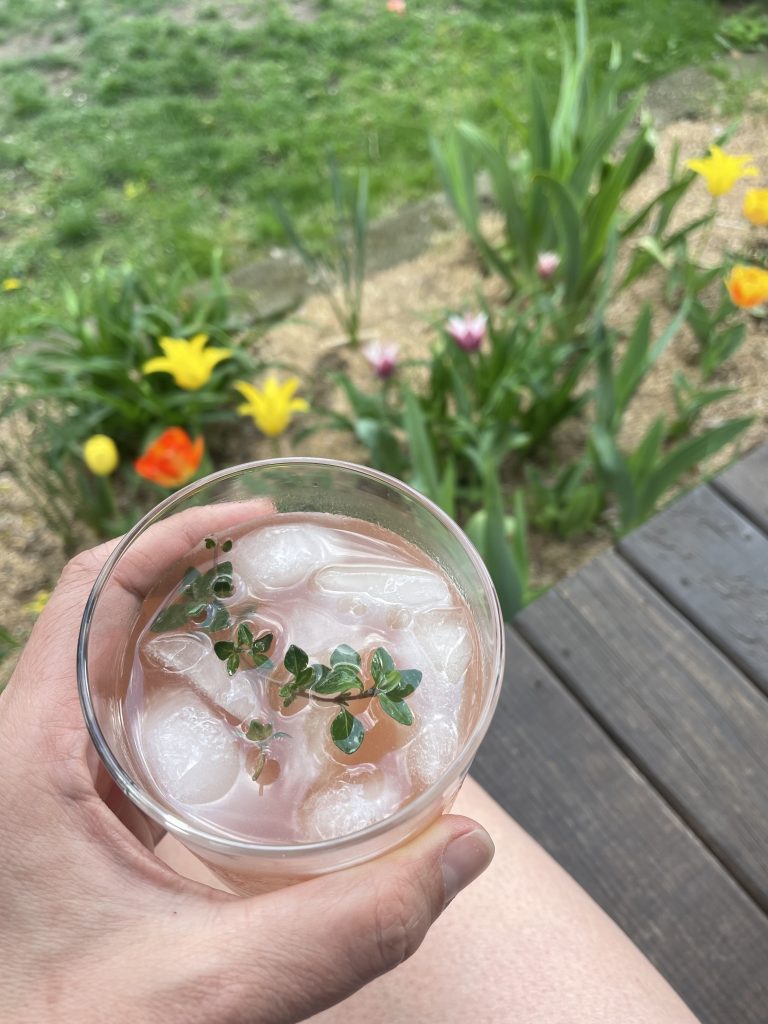
Rhubarb Shrub
Makes about 2 cups
Ingredients
1 pound rhubarb (about 4-6 stalks), roughly chopped
1 cup sugar (maple sugar or 1/2 cup maple syrup work great too)
1 cup water
1 cup apple cider vinegar (I hear red wine vinegar or balsamic are good too, but I haven’t tried them)
Instructions
- Bring rhubarb, sugar and water to a boil in small saucepan. Reduce heat to low and simmer 20 minutes.
- Take off the heat and add the apple cider vinegar. Let cool.
- Strain through a fine mesh sieve (you could use a cheese cloth or clean towel if you need a finer mesh)
- Chill and Enjoy!
This should last just fine in the fridge for a month or so, but I dare you to resist drinking it for that long! I like to add a tablespoon or two to each drink, but you might like more or less.
]]>I’m always looking for ways to use the lavender I harvest and dry each year from my herb garden. Hopefully you have a small bundle of lavender hanging around your kitchen or pantry just waiting to be turned into something other than a scented satchel for your underwear drawer (not that those aren’t an amazingly wonderful thing to do with your dried lavender also, but I get excited to have a variety of uses for all that lavender and even better if it involves eating… lavender ice cream is another favorite around here, but I’ll have to come back to that another day).
I wish I knew the original source of this recipe, but it’s been lost and modified over the years, so you’re stuck with the version I like to make best. The current iteration of crust is modified only slightly from this NYT Cooking recipe from Erin Jeanne McDowell.
Chocolate Lavender Tart
Download a printable PDF of this recipe here
Ingredients for the crust
½ cup (1 stick), at room temperature
¼ cup sugar
1 egg, at room temperature
1 teaspoon vanilla extract
1½ cups flour (any kind will work… almond, whole wheat, white)
⅓ cup cocoa powder
½ teaspoon salt
Ingredients for the filling
3/4 cup whipping cream
1/4 cup whole milk
2 teaspoons dried lavender blossoms
12 ounces bittersweet or semisweet chocolate*
1 Tablespoon unsweetened cocoa powder
1 Tablespoon butter
Instructions
- Bring cream, milk, and lavender just to boil in small saucepan. Reduce heat to low and simmer 5 minutes. Turn off the heat and let the lavender steep in the milk/cream while you make the crust.
- Make the crust
- Preheat oven to 350°F.
- In the bowl of a stand mixer fitted with the paddle attachment, cream the butter and sugar on medium-low speed until smooth, 2 to 3 minutes.
- Add the egg and vanilla, and mix on medium speed to combine. Scrape the bowl well.
- Add the flour, cocoa and sea salt, and mix on low speed until dough is smooth.
- Butter a 9-inch tart pan (preferably with a removable base). Press dough into the prepared pan, both the bottom and sides*. Prick the base of the dough a few times with a fork. (The crust is ready to be baked now, or it can be chilled for 30 minutes or up to overnight, if desired.)
- Chill the crust while you heat the oven to 350 degrees and place a rack in the center of the oven. Place the tart pan onto a baking sheet and bake until the crust appears firm and set, 18 to 20 minutes. Cool completely.
- Make the filling
- Place chocolate in medium saucepan. Strain hot cream mixture into saucepan with chocolate. Stir over medium-low heat just until melted and smooth*.
- Add cocoa powder and butter; stir until melted and smooth.
- Pour chocolate mixture over crust in tart pan. Chill at least 45 minutes (chocolate will be slightly soft after 45 minutes and firm after 2 hours). Cut into wedges and serve.
Interesting notes:
*Original recipe says the tart can be made 1 day ahead, but I’ve eaten it three days later and it was still wonderful. Cover and keep chilled. Let stand at room temperature 1 hour before serving.
*Original recipe calls for chocolate chips, but I’ve used both chocolate chips and big chunks of baking chocolate and both have worked well.
*The last time I made the crust with almond flour, it was pretty wet and pressing it into the tart pan was a bit tricky, but I just went for it, sticky crust and all, and it baked up beautifully, so don’t worry too much if your texture isn’t particularly dough-like.
*This works really well in a double boiler if you have one. I usually just put a ceramic bowl over a pot of boiling water. It’s not perfect, but it works in a pinch.
]]>There’s a “usual suspects” list of must-see Chicago attractions that get thrown around quite a bit. Whether it’s the Bean, Wrigley Field, Navy Pier, or any number of obligatory things to do while you’re in the Windy City. Your mileage might vary on these endeavors, but Chicago is also becoming a destination for travelers who want to “live like a local.” The stellar food, nightlife, and music scenes are becoming major draws of Chicago. One thing that doesn’t get talked about enough is Chicago as an eco-friendly travel destination.
While it may resemble a concrete jungle as much as any urban metropolis, Chicago has made significant strides in recent years toward becoming an eco-friendly city. City officials have been prioritizing sustainability and environmental initiatives for decades, and you’ll find that an eco-friendly trip to Chicago is very doable.
The biggest thing that Chicago has going for it is its extensive public transportation network. The famous “L” train system serves most parts of the city, and bus routes cover almost the entire city. If the weather is great (big if), Chicago is also very bike-friendly. Chicago’s restaurant scene has fully embraced vegan food and sustainability efforts, so it’s easy to find a plant-based meal in just about every neighborhood. There are also plenty of environmentally-conscious activities and attractions to visit during your trip.
One of the best ways to reduce carbon emissions is to get around on foot or on a bike. If you’ll be propelling yourself around the city, you won’t want to have to lug your bags around all day. Luckily, it’s easy to find convenient luggage storage in Chicago, where you can drop the bags off while you explore the best of the Windy City’s eco-friendly offerings.
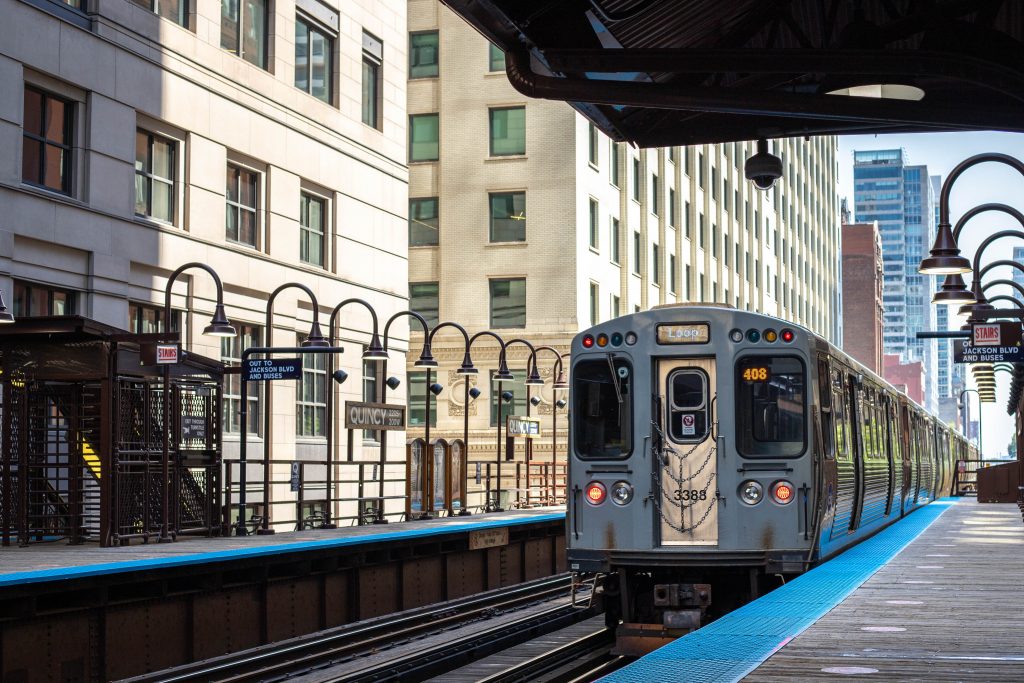
Best ways to get around Chicago
While Chicago is a fairly drivable city compared to New York or Los Angeles, there are plenty of sustainable ways to navigate the city. Here are a few:
Public transportation
Chicago has one of the most extensive public transportation systems in the country. Operated by the Chicago Transit Authority (CTA), there are train lines and bus routes that cover almost the entire city’s geographical footprint.
Most of the popular tourist and business districts are directly served by the “L” train system, which is all routed through “the loop” downtown. CTA bus routes cover the rest of the city and are a very affordable way to get around.
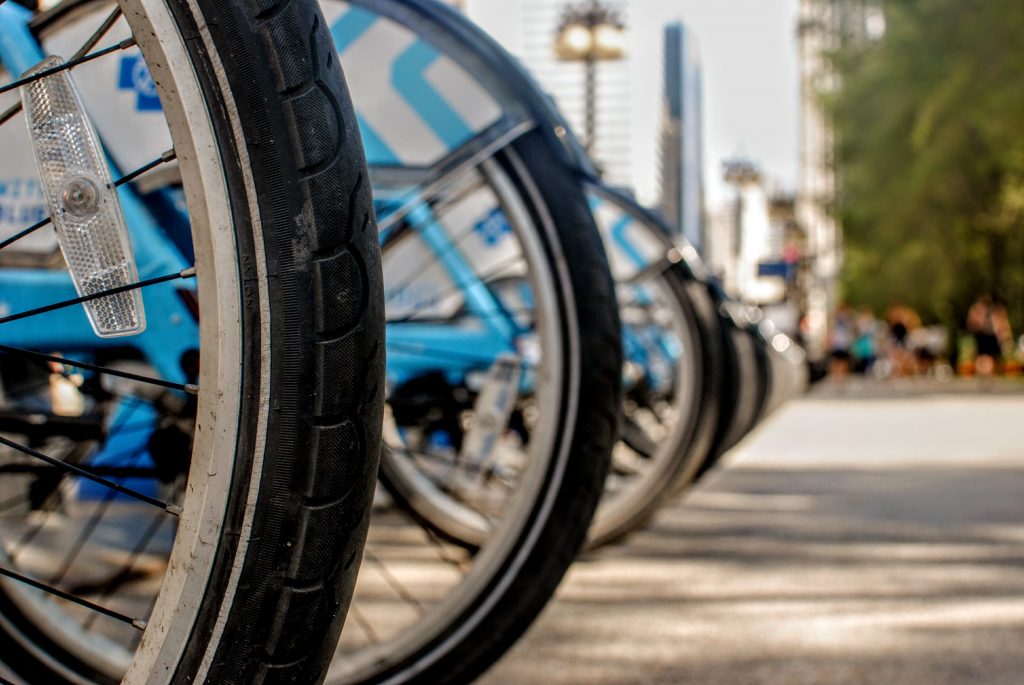
Cycling
Chicago is (almost to a fault) very flat, making it an easy city to navigate on two wheels. In recent years, Chicago has developed a robust cycling infrastructure of designated bike lanes and trails throughout the city.
Divvy, Chicago’s bike-sharing program, is an extremely popular method of transport. During the summer, you can’t miss the thousands of blue bikes being pedaled all over town. This is a great way to get around quickly and conveniently while limiting emissions.
Walking
Chicago’s neighborhoods are pedestrian-friendly and easy to navigate, and it’s generally the quickest way to get around buzzy tourist hotspots and popular nightlife destinations. Depending on your itinerary, you should be able to take the train or a bus to most places and cover the rest of your trip on foot.
Electric scooters
Electric scooters have become VERY popular in Chicago as an eco-friendly mode of transportation. Lime is the most popular service where you can rent an e-scooter to get to and from popular brunch spots and explore neighborhoods.
Vegan restaurants and bars
The windy city may be primarily associated with hot dogs and herculean portions of pizza, but Chicago has a solid vegan restaurant scene. Eating an entirely plant-based diet is one of the best ways to reduce your carbon footprint and minimize animal cruelty. Here are a few notable options for eating vegan while you’re in town:
The Chicago Diner
A beloved institution, The Chicago Diner has been serving up vegan versions of diner classics since 1983. From classic burgers (that you can’t tell are vegan) to hearty brunch scrambles, this menu offers familiar favorites without the guilt.
Handlebar
This laid-back hipster hangout in Wicker Park offers an extensive menu of vegan comfort food. Their seitan wings and vegan mac ‘n’ cheese are both famous among locals, and this cozy spot is an awesome place to have a few drinks as well. During the summer, their back patio is one of the hottest tables in town.
Demera Ethiopian Restaurant
While not exclusively vegan, Uptown’s Demera offers a wide range of vegan-friendly options that showcase the incredible flavors of Ethiopian cuisine. This authentic neighborhood spot features lentil stews, vegetable curries, and injera (fermented flatbread), all of which fit into a plant-based diet.
Bad Hunter
Located in the incredibly lively West Loop neighborhood, Bad Hunter has a vegetable-based menu of inventive modern dishes. The menu isn’t entirely vegan, but there are plenty of options, and they’re known for delicious craft cocktails and natural wine.
Sustainable activities in Chicago
With a stunning lakefront and plenty of parks, there are plenty of ec-friendly things to do during your trip to Chicago. You just have to know where to look!
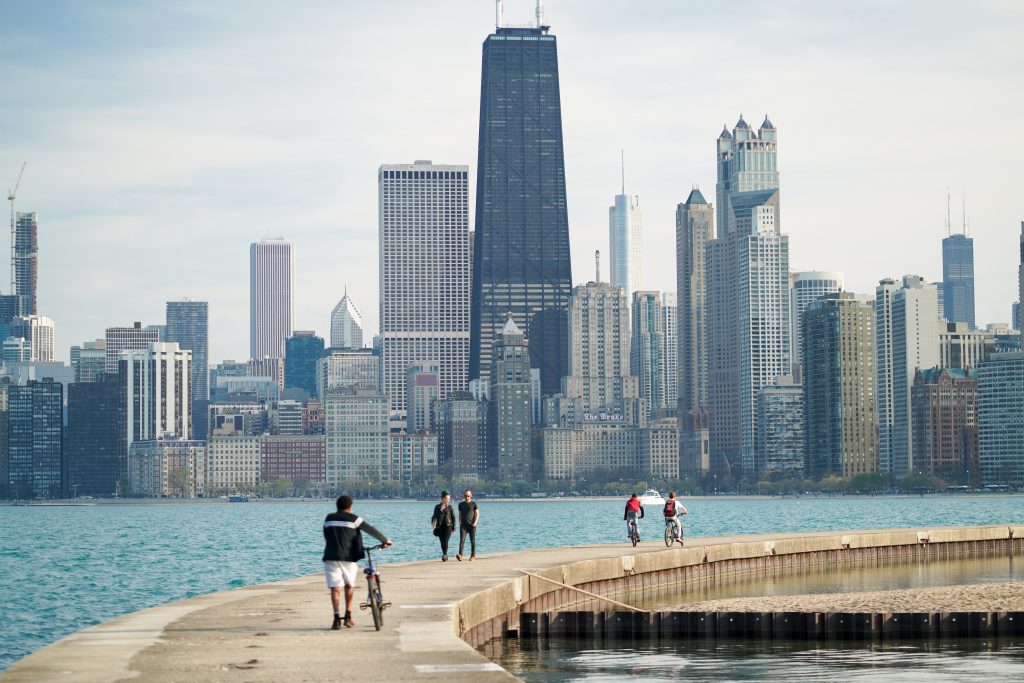
Explore the city by bike
Chicago’s incredible lakefront trail offers amazing views of the skyline along with beautiful Lake Michigan. If you want to see the whole lakefront, you can pedal your way up and down in less than an hour. There is also the 606 trail that runs through uber-trendy neighborhoods like Wicker Park and Logan Square.
Garfield Park Conservatory
Located on the city’s West Side, the Garfield Park Conservatory is one of the most underrated attractions in the city. The Conservatory’s greenhouses are filled to the brim with lush greenery and exotic plants from around the world. There are various themed gardens and a serene atmosphere to enjoy. During the winter, the humid greenhouses will bring you back to life!
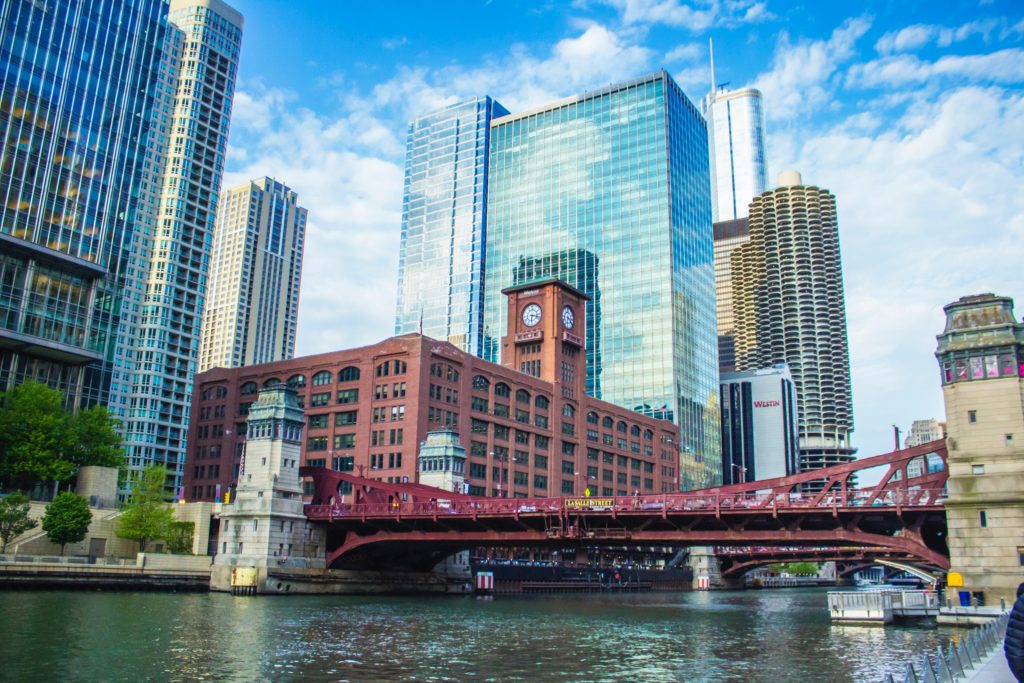
Take a kayak tour instead of a boat tour
The Chicago Architecture Tour is one of the obligatory tourist attractions that come highly recommended. While it’s a solid activity, a greener option would be renting a kayak and exploring the Chicago River without a carbon footprint.
Support local farmers’ markets
Many of Chicago’s neighborhoods host a farmers’ market on weekends. If you want to stock up on local goods and buy supplies for a picnic, head to popular pop-ups like the Green City Market or Logan Square Farmers Market. Even if you don’t buy anything, the people-watching is too good to pass up.
This post was written in collaboration with Bounce luggage storage.
Like this content? Want to see more guest posts? Please drop a note in the comments to recommend new topics or contributors we should be collaborating with.
]]>As you know, I’m currently obsessed with sugar snap peas. They’re coming out of my backyard vegetable garden by the pound right now… we’re picking every other day and getting a pound each time! So I’ve had a lot of peas to experiment with. My other favorite recipe is this sugar snap peas salad.
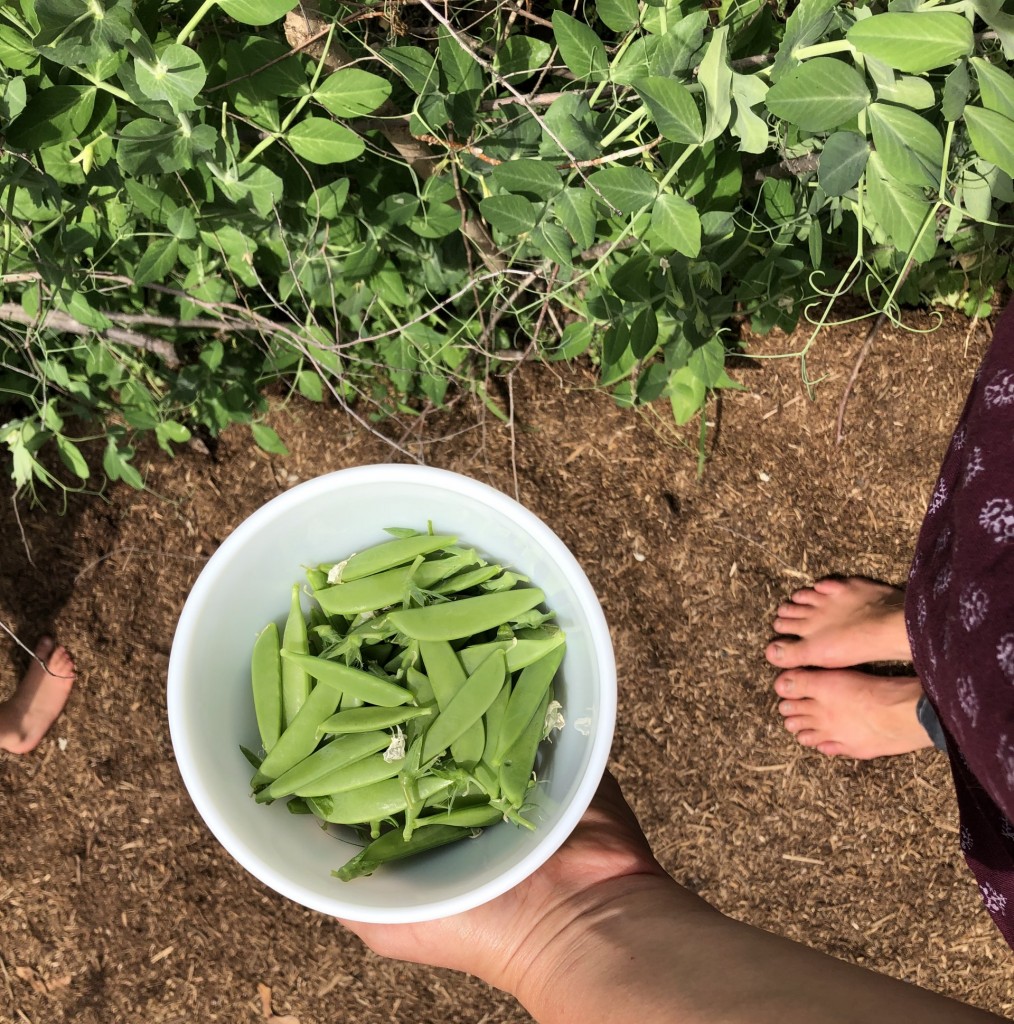
This is our second favorite recipe so far. I love it for two reasons:
- I love any recipe that incorporates my homemade yogurt, especially if its a savory recipe that lets me eat yogurt for dinner!
- Similarly, I love to put delicious toppings on garlic toast! The simplicity of a fancy open face sandwich really makes me happy.
Dilly Beans and Sugar Snap Peas on Toast
adapted slightly from Bon Appetit
Ingredients
1½ cups plain, whole-milk yogurt, drained*
1 teaspoon salt
1 lemon, juice and zest
2 Tablespoons apple cider vinegar
2 teaspoons Dijon mustard
1 teaspoon black pepper
1/4 cup olive oil, plus more for toast
4 chives
8 oz. sugar snap peas
1/2 cup dill
1 14.5-oz can cannellini (3/4 cup dried beans)*
4 slices crusty bread
1 garlic clove
Assembly
- Preheat oven to 400F
- Using a fine mesh sieve, drain your yogurt. Once it’s drained, pour it into a bowl, add lemon zest, and stir to combine.
- In a large bowl, whisk lemon juice, vinegar, Dijon mustard, 1 teaspoon salt, and ¾ teaspoon pepper.
- Whisking constantly, slowly stream in ¼ cup olive oil until dressing thickens slightly and no longer looks oily. You want to add the oil gradually so that your mixture will be creamy and emulsified.
- Trim chives and slice thinly crosswise. Add to bowl with dressing and stir to combine.
- Trim ends of peas and cut on a diagonal into ½” pieces (about the size of your beans) and add to bowl.
- Finely chop dill and add to bowl.
- Drain and rinse beans, then add to bowl with dressing.
- Toss until well coated. Taste and adjust seasoning, adding more salt if needed.
- Place bread on a baking sheet, drizzle (both sides) with olive oil. Toast bread in the oven, finishing on broil if needed to make them extra crispy.
- Rub both sides of the bread with garlic clove; season with a little salt.
- Divide yogurt mixture among toasts. Spoon peas and beans over. Don’t leave any vinaigrette behind: Divide any leftovers among toasts.

I’m still on the lookout for great pea recipes, so please tell me how you’re using them and send me your favorite recipes in the comments below!
*Recipe Notes:
- You could use greek yogurt or ricotta instead of draining whole-milk yogurt. The original recipe calls for ricotta, which I never have in my fridge. On the other hand, I make my own yogurt every single week, so I’ve always got plain, whole-milk yogurt.
- I almost always cook dried beans in my instant pot. If you’re like me, you’ll need to cook 3/4 cup dried beans for 40 minutes in the instant pot.

A few years ago, I sewed a bunch of reusable cloth gift bags in cheerful Christmas patterns and they continue to bring me such joy!
I love wrapping presents in these gorgeous bags. I love giving them to people (and am so honored when friends and family want to keep the bag in addition to the gift… in fact, you’ll regularly find me sneaking around and gathering my bags up after gift opening is over at our family gatherings). I love reusing them year after year!
AND they’re super easy to make! I swear, they’re a great project for beginner sewers because it doesn’t matter the size, shape, or even if they’re particularly square. The process is three simple steps: cut, sew, enjoy!
Step 1: Cut your fabric
If the exact size/shape isn’t important to you, I recommend letting your fabric dictate the size.
For example, my fabric is almost 42 inches wide, so I cut it exactly in half and made two 10 inch wide bags. I cut my fabric 15 inches tall and ended up with two 10”x13” gift bags. I love using printed fabric like this because it makes straight cuts easier. I pick a spot in the pattern and cut right along the “line”.
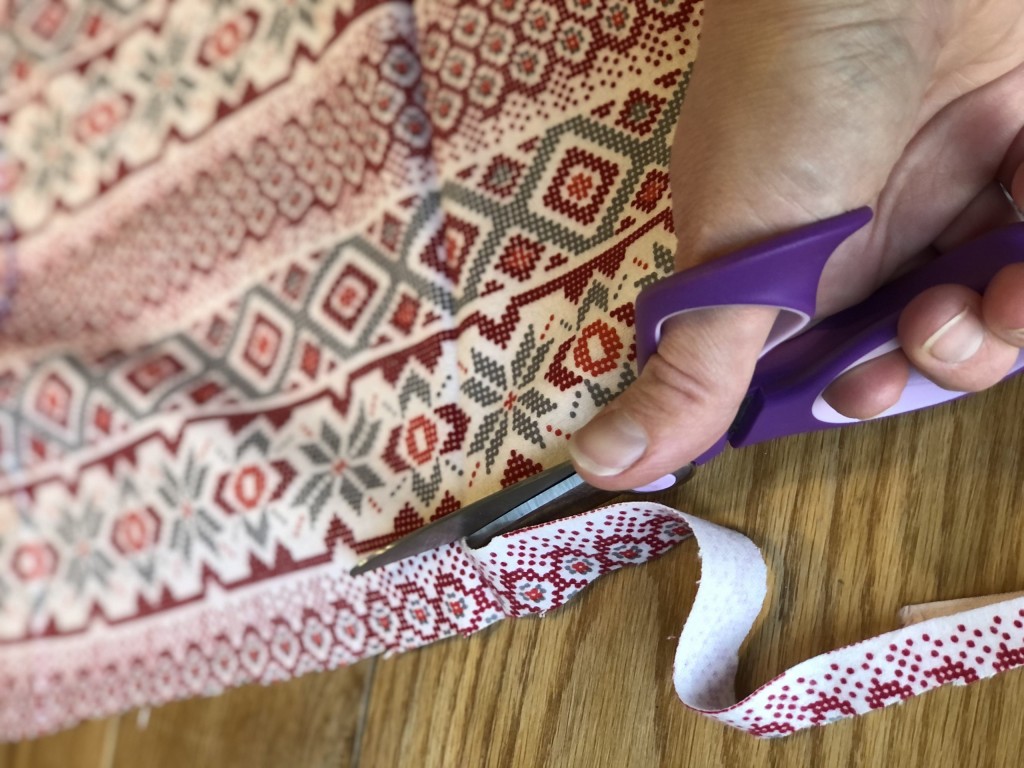
After cutting, my fabric is about 21 inches wide and 15 inches tall.
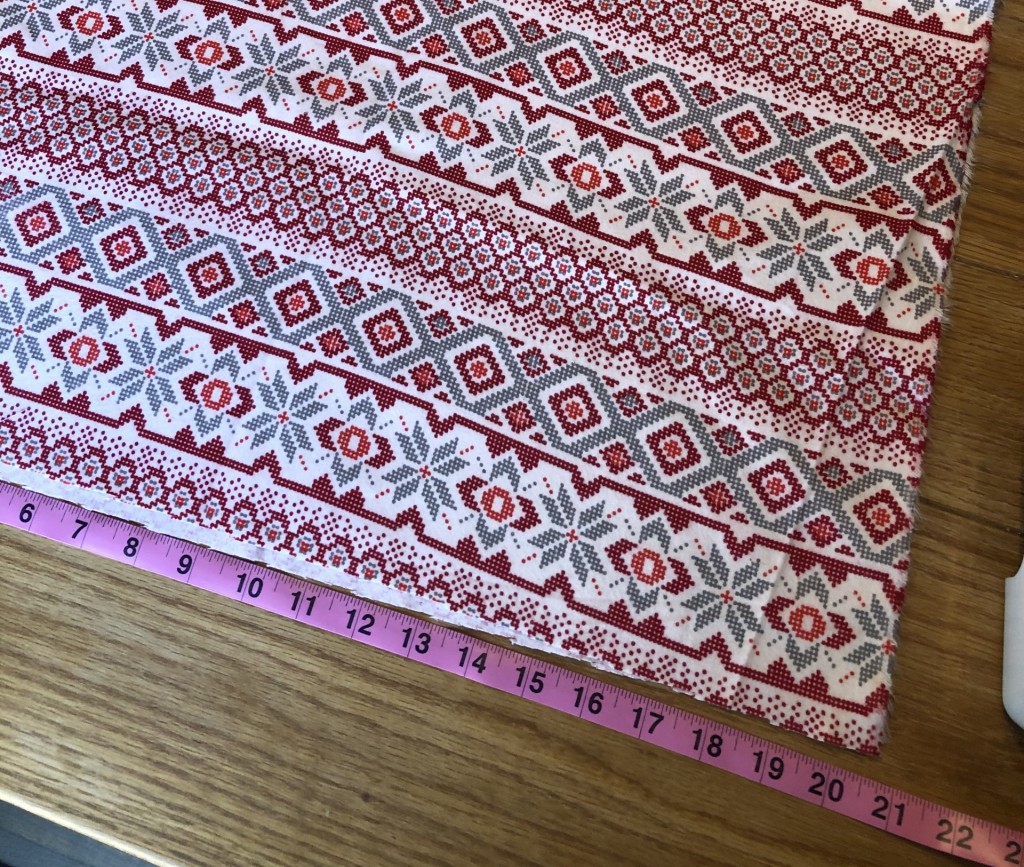
Step 2: Cut your cord
I used 1/4” cotton cord, but feel free to use bigger or smaller. Choose the top of your bag (based on the pattern) and cut your cord at least 8-10 inches longer than the width of your fabric (it will hang out 4-5 inches on either end when you’re done).
My fabric is 21 inches wide, so I cut my cord about 31 inches long.
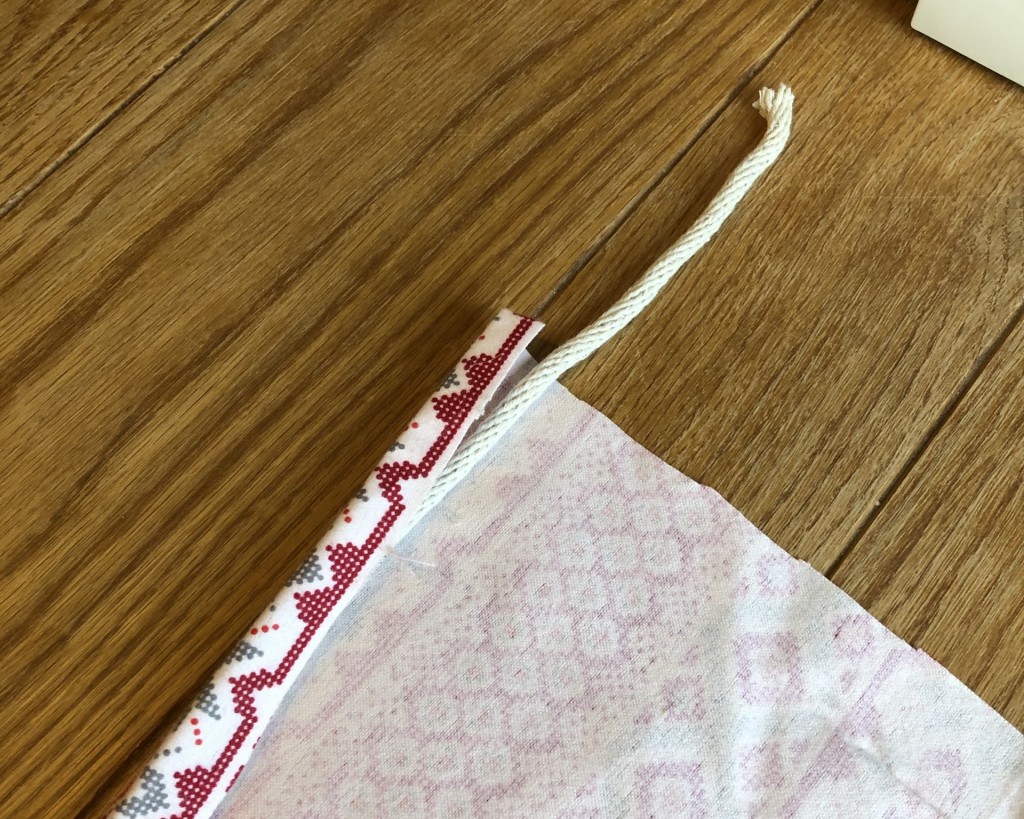
Step 3: Sew your cord into place
Place your fabric with the wrong side up* and the top pointing away from you. Place your cord along the top edge and fold the top of the fabric towards you. You’re going to sew a little pocket for the cord to slide through, so make sure there’s enough fabric that you can run your foot** along the seam without stitching the cord.

* the “wrong side” is what we call the back of your fabric, the side without the pattern, the side you want on the inside of your bag. ** the “foot” is the mechanism around the needle on your sewing machine as shown in this photo.
Step 4: Sew the other two seams
Keeping the wrong side up, fold your fabric in half. This will be the final shape of your bag, so the cord should be at the top and you should have seams to sew across the bottom and one of the sides. Trim any excess fabric if your edges aren’t lining up.
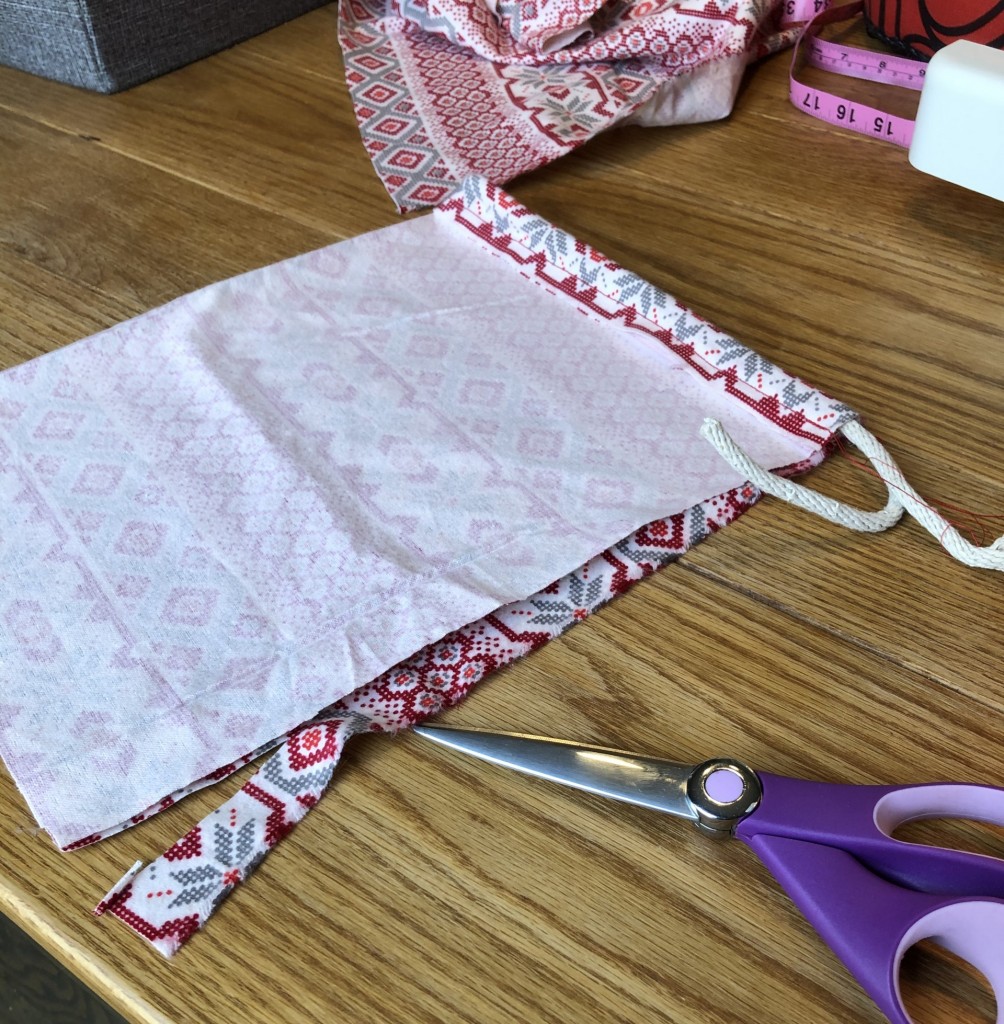
Go ahead and sew these seams. The only tricky part is making sure you don’t sew through the cord/pocket. If you do this, you won’t be able to pull the cord to cinch the bag closed.
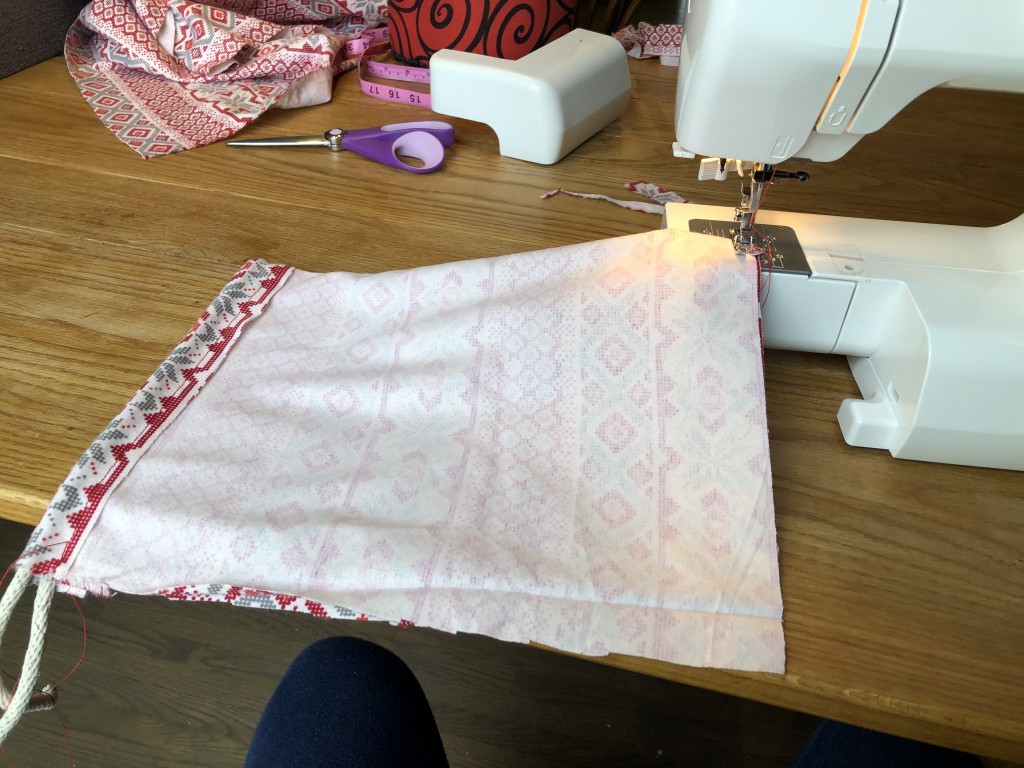
Trim extra thread and turn your bag right side out.
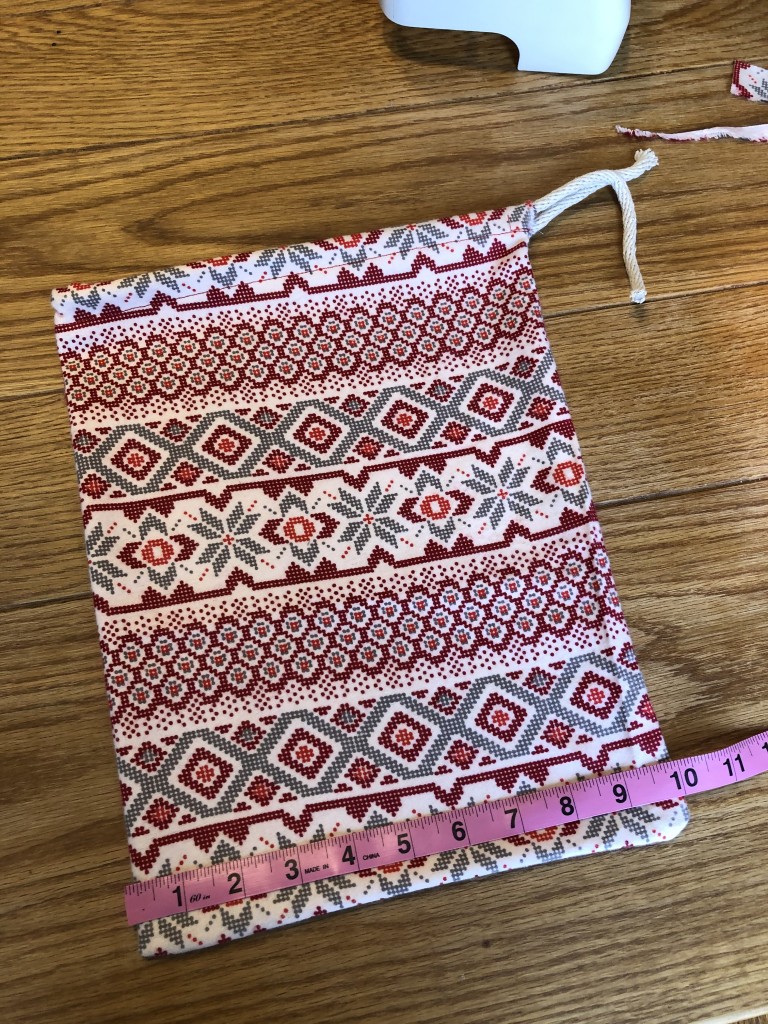
Step 5: Tie knots at each end of the cord
This will prevent the cord from accidentally getting pulled into the pocket when someone is opening their gift. Fishing the cord back out is certainly possible, but a royal pain.
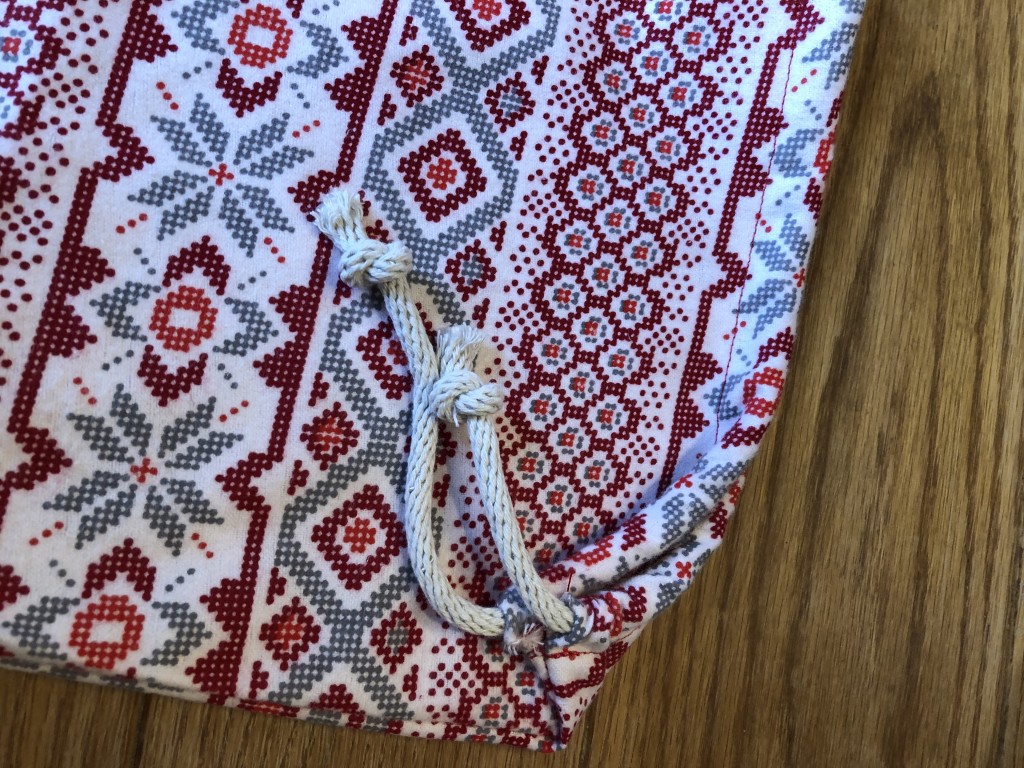
You’re done! You can make as many bags as you want, in a myriad of sizes to meet your gift giving needs!
I have about 24 bags total and the “10×13” bag I made today is the “medium” size bag in my collection. I have a bigger size (roughly twice as big) and a smaller size too. Three yards of fabric will yield about 8 medium and 2 large bags. I like to mix and match my colors and patterns, so I’ve purchased different patterns over the years.
Please drop your questions in the comments below. I’m always happy to answer questions!
And comeback to tell me about your experience if you’re making these reusable gift bags for the first time. I can’t wait to hear about your project!
PS. Does this post feel familiar? It should! It was originally posted a couple of years ago. I’ve updated and republished it because it’s one of my favorite posts.
]]>Most of us firmly believe that one is “better” than the other, but there’s a really interesting debate about the sustainability aspects of this tradition. Here are a few pros and cons to consider when choosing the type of tree you use to celebrate the holidays.

Natural Trees
PROS
- The trees provide many benefits to the environment as they grow, cleaning the air and providing watersheds and habitats for wildlife.
- They are a renewable resource and replanted after being cut.
- They grow best on rolling hills that are often unsuitable for other crops.
- When you buy a tree from a local farmer, you’re supporting the people who live in your community.
- Trees are biodegradable and can be composted, mulched, or burned.
- The British Carbon trust estimates the average carbon footprint of a natural tree is 3.5kg of CO2 when composted, mulched or burned.
CONS
- Buying a tree every year can get very expensive. According to Consumer Reports, the average cost of a natural Christmas tree in 2020 was $81.
- Not everyone has access to local Christmas trees and transportation contributes to the environmental impact of your tree. If you drive more than 10 miles to get your tree, it might be more environmentally friendly to purchase an artificial one.
- Not everyone has access to tree recycling programs. In the UK, an estimated 7 million Christmas trees are landfilled each year.
- The British Carbon trust estimates the average carbon footprint of a natural tree is 16kg of CO2 when composted, mulched or burned.

Artificial Trees
PROS
- The average artificial tree costs $107, making it the economical choice in the long run.
- Caring for your tree and extending its use beyond the average seven years will certainly reduce the environmental impact.
- Reselling, gifting, or donating your tree when you’re done with it will help extend the life.
- If you use your tree for 12 years or more, you might actually have less of a carbon footprint than a natural tree.
CONS
- Most of the artificial trees on the market are made of PVC and steel in China and shipped to the United States.
- Artificial trees are used for an average of 7 years before it is disposed of. If a tree is displayed for 1 month/year, it will have served as a Christmas tree a total of 7 months.
- Most artificial trees cannot be recycled at the end of their life.
- The British Carbon trust estimates the average carbon footprint of an artificial tree at 40kg.
My vote? Team Natural!
My family sits squarely on Team Natural. In fact, we choose to hunt for our Christmas tree in the National Forest each year and it’s one of my favorite family holiday traditions! We love the adventure of wandering through the wild forest, foraging for the “perfect” Christmas tree.
Did you know you can harvest a Christmas tree from the National Forest? You can! And in Michigan, the permit is only $5. Read more about my tips and recommendations for a successful Christmas tree hunt in the national forest here, in this updated blog post.

Let’s Recap
If you’re going to buy a natural tree, buy local from a tree farm or retailer (preferably less than 10 miles from your home) and don’t throw your tree in the trash after the holiday.
Lots of municipalities have specific days for curbside recycling of Christmas trees. Alternatively, you can put it in your yard waste container, drop it off at a local recycling center, or let it naturally biodegrade on your own property if you have the space.
Birds and small mammals love the extra shelter and you’ll be shocked how quickly the tree decomposes. Usually, your county/city will share this information right after Christmas. Please feel free to share a link to your county/city tree recycling program in the comments. I’m sure your co-workers will appreciate it!
If you’re going to buy an artificial tree, buy the most durable one you can find (look for warranties) and keep it as long as possible.
For all this debate, it’s worth maintaining the perspective that no matter which you choose, your tree has a climate impact equivalent to driving roughly between 10-20 miles. So, bike to work a few days a year, and you’ve already offset your tree, no matter which type it is.
What about you?
Are you on Team Natural? Feel free to share your favorite local tree farms in the comments.
Are you on Team Artificial? Who’s had their artificial tree the longest? Anyone over 10 years? 20 years? What’s the sturdiest model available?
Here are links to my sources if you’re interested in digging deeper.
https://www.sightline.org/2015/12/21/your-christmas-trees-carbon-footprint/
https://www.nytimes.com/2018/11/26/business/energy-environment/fake-christmas-tree-vs-real-tree.html
https://www.independent.co.uk/environment/christmas-trees-recycling-environment-sustainability-plastic-a8705081.html
https://www.carbontrust.com/news/2013/01/christmas-tree-disposal-advice/
https://www.in.gov/dnr/forestry/7561.htm?fbclid=IwAR3PlYxqOFDnWILG7ej8_BPRSsCPhO2LjGq2L9dZ3gXqwh7NKeu55LX53eY
https://www.thinkstep.com/content/study-comparative-life-cycle-assessment-artificial-and-natural-christmas-tree
]]>
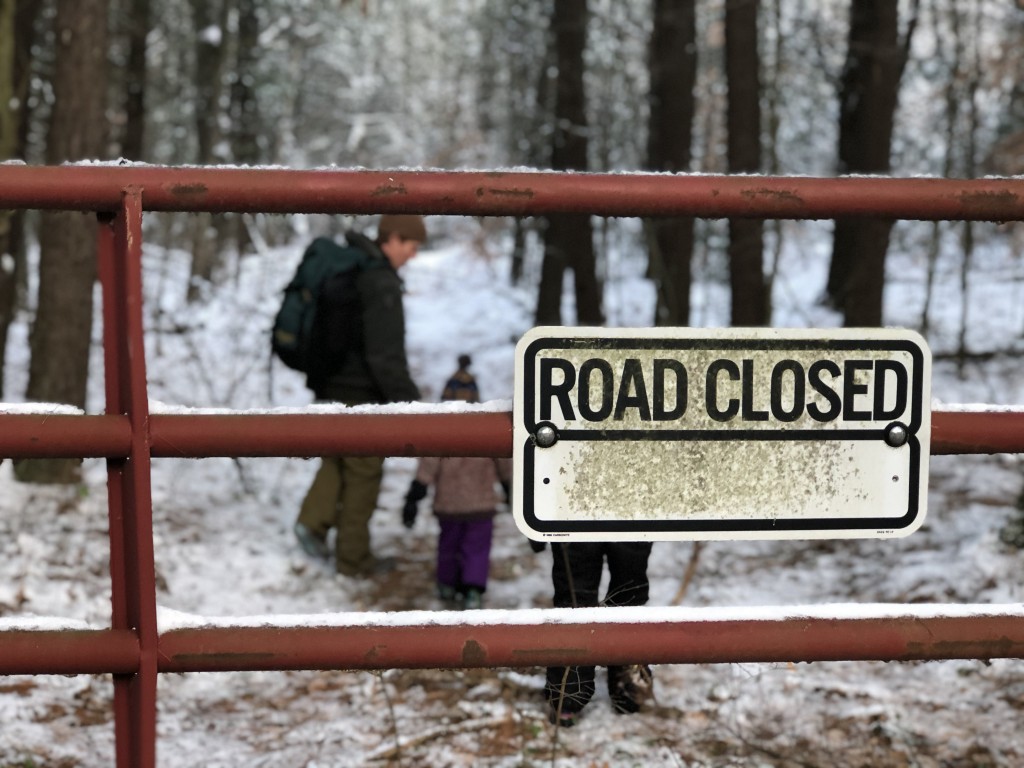
This is one of my FAVORITE family holiday traditions! We love the adventure of hunting for our Christmas tree in the natural woods! We pack hot chocolate and marshmallows, and make an afternoon out of it!

To be clear, my Christmas tree does NOT look like the $50 version many of us are used to buying from a tree lot. It’s hard to find a small, bushy tree (remember, we’re talking about a natural forest here), but I LOVE the entire experience and wouldn’t trade it for the world.
By harvesting a tree from the National Forest, I’m contributing to the overall forest health. As highlighted on recreation.gov, “Christmas tree permits are a unique opportunity for citizens to help thin densely populated stands of small-diameter trees – the perfect size for a Christmas tree.”
Ready to plan your hunt?
For a great day of family fun while hunting for a Christmas tree hunt in a National Forest near you, I recommend the following preparations:
- Plan to spend the whole day, don’t rush. One year, we tried to cram our Christmas tree hunt into an afternoon and ended up hunting well into twilight and hauling our tree out of the woods in the dark! Don’t get me wrong, we still had an amazing time, but I would have enjoyed it even more if we’d had more time for our fireside picnic. And, especially if this is your first time… it will take longer than you think.
- Pack a picnic. We love to bring snacks, hot cocoa, and s’mores supplies. Especially if it’s cold, we sometimes build a little campfire to warm our fingers and toes (of course, we make sure to build it in a safe spot and extinguish the fire completely before we leave). We try to move slowly through the adventure, making time to enjoy the woods before cutting our tree and coming home.
- Review the maps provided by your local organization to make sure you know where you are, and more importantly are not allowed to cut a tree. Be a good citizen and pay attention to private property signs. In Michigan, small parcels of private property and National Forest land are often intermingled. It’s also helpful to review aerial maps (on google) ahead of time to look for heavily forested areas and to identify areas with conifers.
- Take some printed maps along on your adventure. Sometimes our day proceeds exactly according to plan, but more often than not we have to adjust our plans along the way. We regularly find ourselves without cell service at various points during our hunt and are always grateful to have printed maps. We have an atlas that covers the whole of southern Michigan. We also print maps from recreation.gov to make sure we have the most updated information. If you live in Michigan, here are some additional maps to reference:
https://www.fs.usda.gov/Internet/FSE_DOCUMENTS/fseprd536815.pdf
https://www.fs.usda.gov/Internet/FSE_DOCUMENTS/fseprd536816.pdf
- Brush up on your tree identification skills. Your National Forest may limit the specific types of trees you’re allowed to harvest for your Christmas tree. If you’re not 100% confident in your tree identification skills, bring a book along with you!
- Consider buying two permits. If you have enough space in your home, think about buying a second permit so the kids can select and bring home their own tree. Crafting a love of the forest and outdoor adventures is a key point to this adventure for Robbie and me. You should see the pride in my girls’ faces as the find the perfect tiny tree for their bedroom. They name the tree, they carefully carry her to the car, place her in their shared room, decorate her with their favorite ornaments (she’s so small, it really only takes a few lights/ornaments and you could easily use paper chains and other homemade decorations if you don’t have extras), and water her every day. I said “no” to a second tree for years and I’m so happy I finally realized how much extra fun it could add to our adventure.
- Get ready for a fun family adventure!

Ready to buy your permit? It’s a quick and easy process! Here are a few tips:
Visit Recreation.gov for more information and to buy your permit online. It’s really quite easy! The website will help you through the following steps.
Choose Your Forest
Determine which participating forest works best for your Christmas tree outing. Each forest will have specific guidelines and season dates for cutting a holiday tree.
Get the Details
Be safe and prepared. Carefully read the details and rules of your permit, and follow the Need to Know suggestions to prepare for your visit.
Buy a Permit
Purchase and print your permit so you’re ready to find your perfect holiday tree.
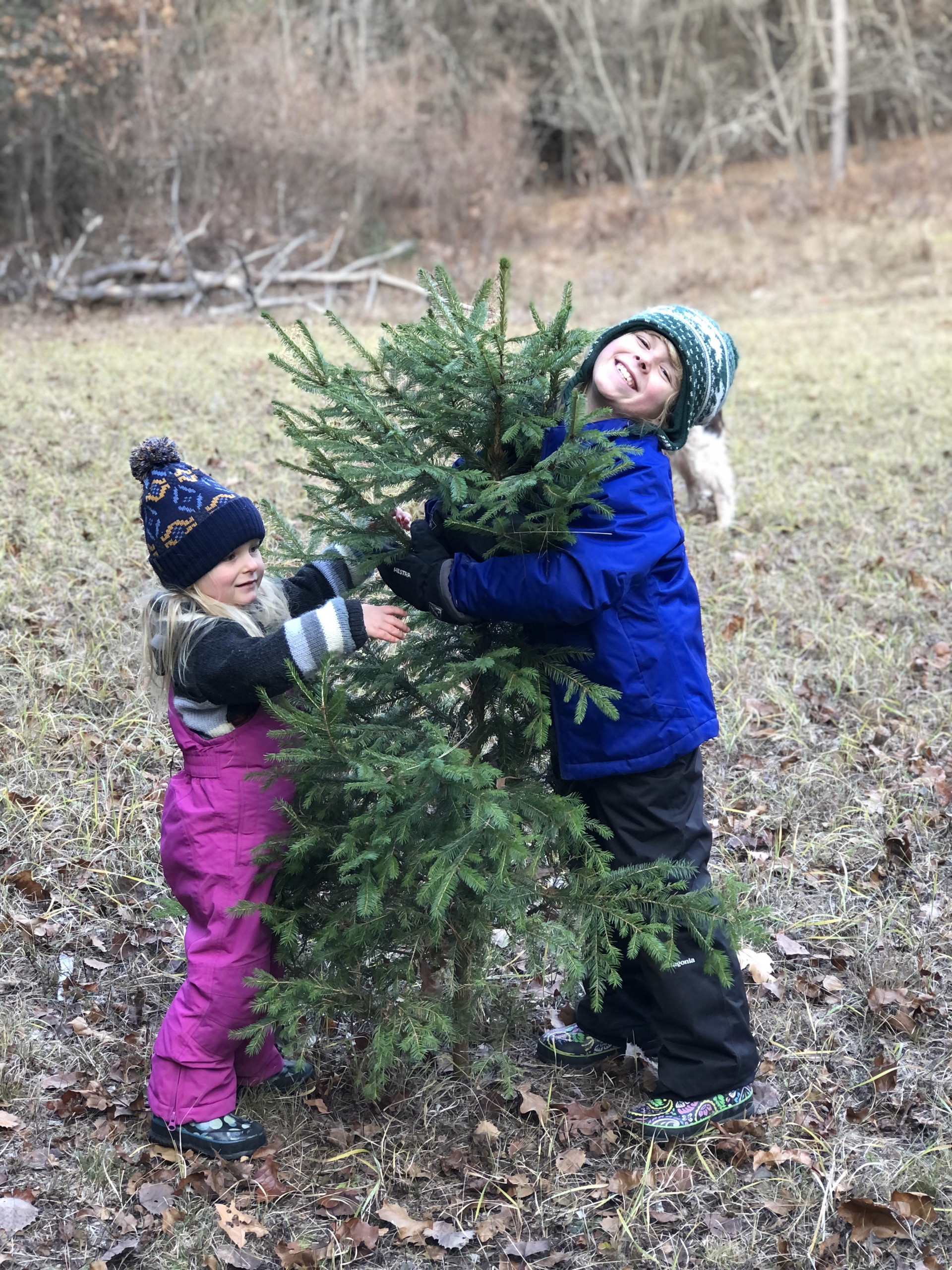
I can’t wait to hear about your experience harvesting a Christmas tree from a National Forest near you! Please share your experience, stories, and recommendations!
PS. Does this post feel familiar? It should! It was originally posted a couple of years ago. I’ve updated and republished it because it’s one of my favorite posts.
]]>The blog went live last week, but since every day is Earth Day around here, I’m sharing it with you now. Read on for some great tips from sustainability bloggers around the web, including yours truly.
P.S. most of these tips are relevant for everyone, even if you don’t live in an apartment, so don’t let the title fool you into skipping this great read.
Switching to greener alternatives is a great way to live a sustainable life, especially with Earth Day approaching. There are many ways to be environmentally cautious while living in an apartment.
Most apartment complexes offer compost and recycling bins and there are many alternatives to things you use every day. To help you get started, we reached out to green experts to share their tips on how to live a sustainable lifestyle in an apartment. So whether you’re trying to live a more environmentally friendly life in your apartment in Boulder, CO, or your studio in New York, NY, read on to see what they had to say.
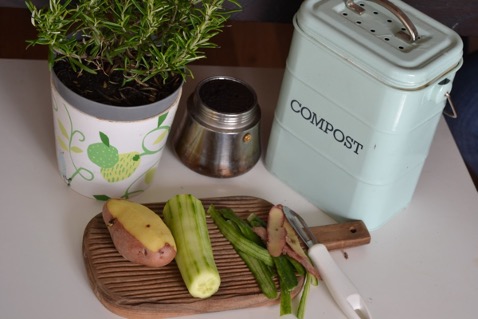
1) Ways to recycle when your apartment doesn’t offer the service
About 20 billion plastic water bottles wind up in landfills each year or are incinerated. Recycling those plastic bottles and aluminum cans helps the environment, and in some states like California, put some cashback in your pocket. Some apartment complexes don’t have separate recycling available for the residents so recyclable items end up in the trash and ultimately, in the landfills. Here are a few ways to recycle if your apartment complex doesn’t offer to recycle.
- Contact companies to pick up your cans and bottles from your door.
- Walk your recyclables down separately if your building has a designated recycling room.
- Ask friends who have access to curbside recycling if you could bring the recycling with them.
- Bring your recycling to a drop point or recycling center.
- Ask your landlord to get curbside recycling or set up a recycling area and get signatures from other people in your building.
- Bring it to work and use the office recycling pick up.
2) Be conscientious of where you live
Transportation has a big environmental impact, so choosing where to live can be a really important moment in your sustainability journey; it’s your opportunity to design a life where you can walk and bike more and drive less. Here’s a fun exercise I like to use when shopping for a new house or apartment:
- Grab a map and draw dots on the map to mark the places you need to visit often (for example, your work, the kids’ schools, your favorite grocery stores, restaurants, coffee shops, the public library – whatever is most important to you). Hopefully, these are clustered in one area of the map. If not, start with the most important cluster and repeat this exercise multiple times.
- Use a string and a pencil to draw two circles, with your cluster of dots at the center; one that represents 1 mile and another that represents 3 miles; you should, of course, choose distances that feel right to you and your walking/biking lifestyle. If public transportation is an option, draw a third circle to represent your reasonable commute on public transportation.
- These circles represent the best areas for you to live. If you had to do this for multiple clusters, look for overlapping circles that will allow you to live in one place, yet walk, bike, or take public transportation to your most important/frequent destinations.
3) Planning is a crucial part of a sustainable lifestyle
There are so many fantastic tips for reducing food waste from adding kitchen rolls to your bags of salad leaves extending their freshness by up to 4 days to keeping your spring onions in a glass of water and placing them near your kitchen window – this allows you to clip them as you need them and have them grow back in between. But the most important thing is ‘Planning’, plan your meals for the week in advance of going shopping. Then check what food you currently have and after that only buy what you need for the planned meals. Lastly, the freezer is your friend. If you have too much food, freeze it instead of letting it go to waste. – Foodie Save
4) Composting companies can aid you on your journey
Managing your own composting system in an apartment can be difficult. Some companies provide a 5-gallon bucket with an easy-to-remove, but tight sealing lid for you to store your food scraps, and can even empty it for you. – Circle Compost
5) Simple switches can make a big difference
We believe you don’t have to switch up your entire life to live more sustainably in an apartment. Simple swaps like replacing your shower head for a water-saving version, switching out your soap products for low/zero waste alternatives, or starting a worm composting bin on your patio for your food waste can all make apartment living a little greener. By being informed consumers and utilizing our purchasing power in sustainable ways, we can co-create a healthier, more abundant planet. – Heal the Planet
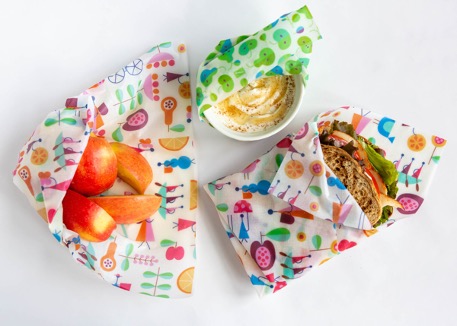
6) Use reusable food wraps to preserve leftovers
Use reusable food wraps for long-lasting produce. Learn veggie revival tips, recipes that preserve or celebrate seasonal favorites, and how to cultivate a scrappy kitchen ecosystem that alchemizes trash into treasure – like turning a freezer full of peels into stock, excess herbs into pesto, leftover berries, and kale into smoothie cubes, the last of this-n-that into salad dressing. Whatever your imagination dreams up to rise to the challenge of no leaf left behind. – Z Wraps
7) Be mindful of your surroundings and ‘unplug’
We believe living a more sustainable life means being more aware of the entire energy ecosystem around you, and making little decisions that can have a big impact. This can be as simple as ‘unplugging’ literally and figuratively. For example, designate a special time of each day (or week) and commit to shutting off smartphones, computers, and the TV to enjoy some low-tech time out. Shutting down over time adds up. Chargers, even without being attached to a phone or device, still draw between 0.1 and 0.5 watts per hour. – Pink Energy
8) Keep your compost and plants bug-free
We understand that keeping things sustainable and hassle-free isn’t always easy, so take advantage of their simple sustainable solutions to common problems: Pest products can tackle fruit flies for those kitchen composters out there. – Aunt Fannie’s
9) Switch to eco-friendly kitchen accessories
Each of us has a moral responsibility to be environmentally friendly by reducing waste and conserving our planet’s precious resources. One simple solution is to get rid of the single-use plastic products and switch to compostable products in your kitchen. You can start by using eco-friendly dinnerware such as plant-based cups, plates, straws, and cutlery composting help break down organic materials and turn them into rich soil, without harming the environment with chemicals or filling up the landfills. – Greenchain Compostables
10) See if your building provides EV charging equipment
Your apartment is a reflection of you, like your commitment to a sustainable lifestyle and your decision to drive an electric vehicle. Make a statement by living where that commitment is shared by your fellow residents and building owners too. Look for EV charging equipment and talk to the building management about valuable utility incentives and potential carbon credits for adding charging. – Tracy K. Price, CEO of Qmerit.
11) Reduce your plastic waste with biodegradable bags
We feel one of the best ways to live a sustainable apartment life is to reduce your plastic waste by looking for re-usable plastic products or non-plastic products, recycle what can’t be reused, look for products with the least amount of wasteful packaging, and supporting companies with a sustainable environmental mission. And when you do throw away garbage use biodegradable bags. – BagUps
12) Be an eco-conscious consumer
Limited space in apartment living can be a real struggle. For anyone pursuing a sustainable lifestyle, my advice is to adopt the mindset of an eco-conscious consumer. This mindset begins by minimizing your possessions. It’s easier to get organized when you get back to the basics, plus life gets simpler. You would be amazed how uncluttered the mind can become just by decluttering the physical space surrounding you. Next, when shopping and acquiring new possessions, commit to donating one or two items for every new thing you bring into your space. This mindset will help you choose quality over quantity and think before buying. – ECO CRATES of America
13) Support renewable energy
Whether you rent or own an apartment, anyone can easily reduce their carbon footprint by supporting renewable energy from sources that replenish themselves naturally — like wind, water, sun, or forests. There can be affordable ways to reduce your environmental impact. In states like Maine, you are able to support renewable energy by matching your electricity use with no-emission 100% Maine-made clean energy. – Maine Green Power
Which of these is most eye-opening for you? Is one of your favorite tips missing from the list? Share your feedback in the comments!
]]>
I hear you… “ok, Erin, but after I’ve roasted and frozen them, what do I DO with all these beautiful red peppers?”
Let me introduce you to my FAVORITE fall soup: Roasted Red Pepper Curry Soup. It’s easy to make, gluten free, dairy free, and EVERYONE in my family is happy to eat this meal! This recipe works well with roasted red peppers from a jar if you’re short on time or you could follow steps 1 and 2 below with just 3 or 4 peppers if you want to make a batch of soup today (and skip the freezing all the peppers step).
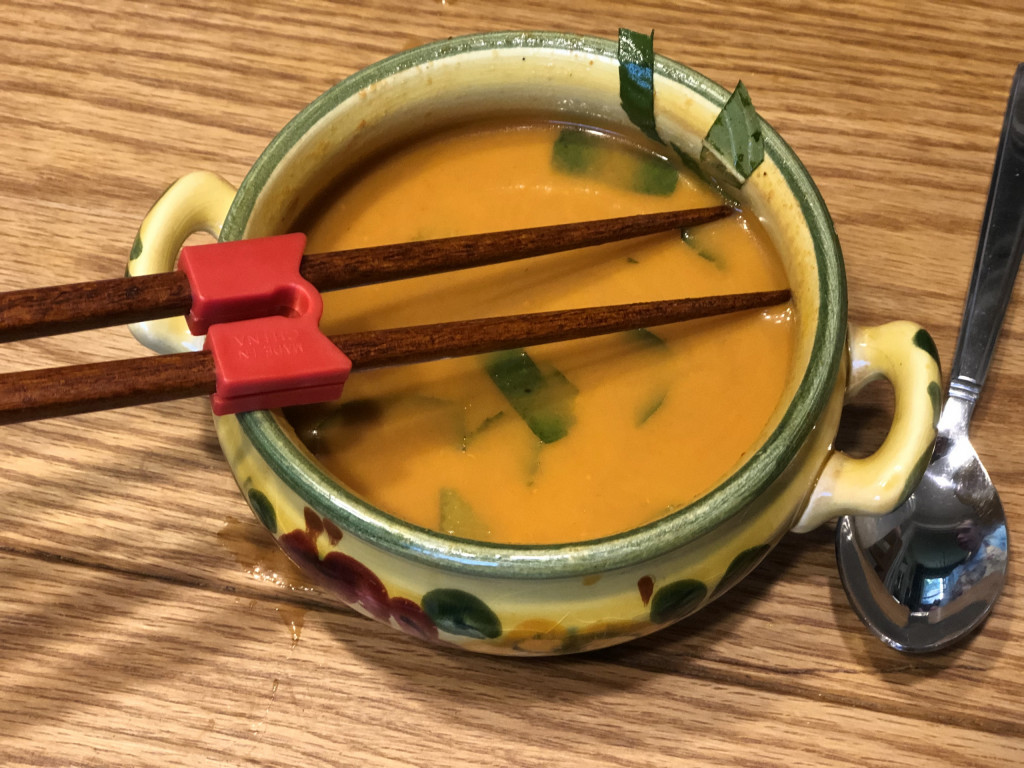
One of the things I love about this recipe, is the ability to customize your bowl with your favorite toppings. In my house, this type of approach is key to finding a dinner everyone loves. Robbie and I love adding thai basil from the garden, a swirl of sriracha, and chopped up pistachios for a little spicy crunch. The kids love fried tofu and rice noodles. The combinations and possibilities feel endless! If you experiment with toppings in your home and find a combo you love, please come back and share it in the comments!
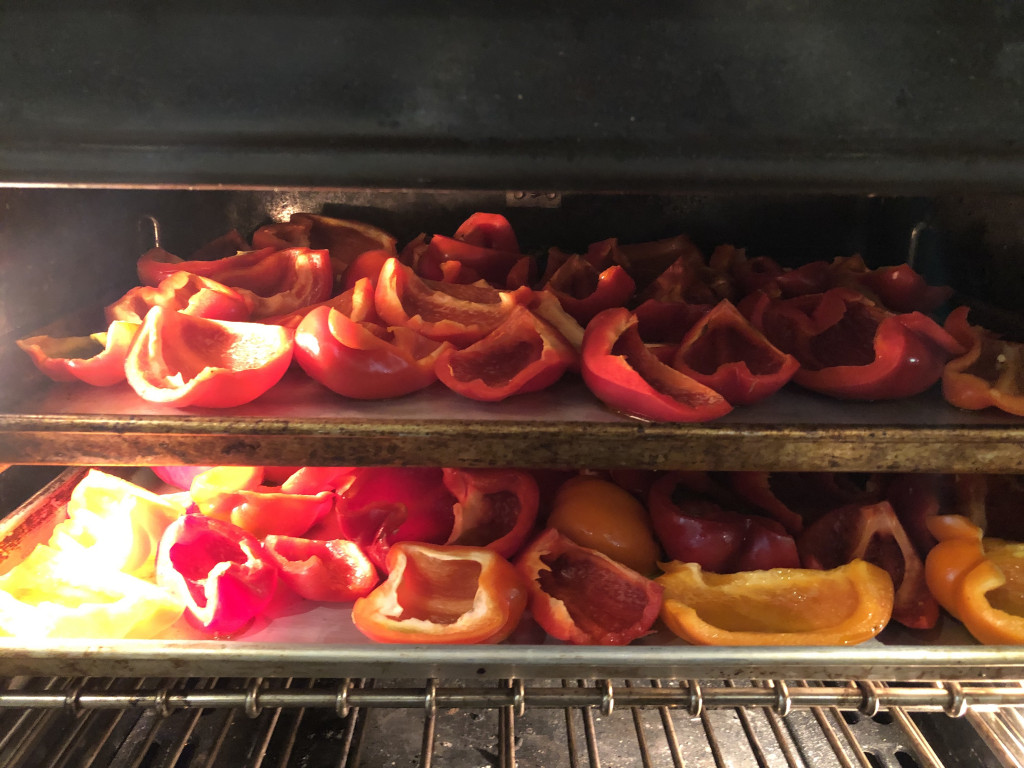

Home-roasted Red Peppers
My farmers market and nearby farm stands are overflowing with beautiful red, and even yellow and orange, peppers! Home-roasted red peppers might be the easiest and least time consuming way for you to dip your toe into the home food preservation waters. It’s a simple as 1, 2, 3!
- Wash and cut peppers into quarters, removing the stem, seeds, and inner white ribs
- Place on a baking sheet, drizzle with olive oil and roast at 450F until the skin starts to bubble and slightly blacken.
- Place into pint jars (each one will hold something like 3-5 peppers) and pop them into the freezer
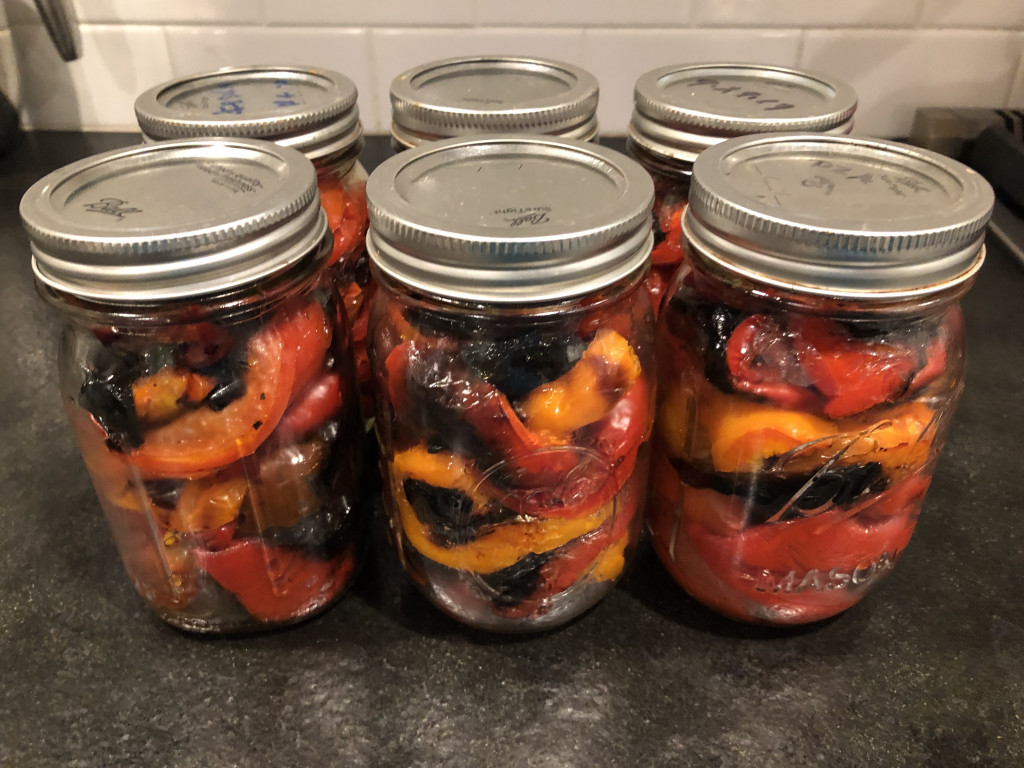
Roasted Red Pepper Curry Soup Recipe
(makes lunch/dinner for four to six people, leftovers are delicious too)
I have no idea where this recipe came from. I wish I could tell you the source, but I wrote it in my “favorite recipes book” and have been making it from there for the past couple of years. Apologies to the original author.
Download a printable PDF of this recipe here
Ingredients
- 2 teaspoons olive oil
- 2 cloves garlic, chopped roughly
- 1 inch ginger root, chopped roughly
- 3-4 red peppers, roasted in the oven as described above
- 1 quart (4 cups) vegetable or chicken stock
- 1 can coconut milk
- 3-4 Tablespoons red curry paste
- 2 Tablespoons soy sauce
- 2 Tablespoons lemon juice (lime would work just fine too)
Optional ingredients for topping (I recommend picking 3 or 4 of these)
- 1/4 cup cilantro, basil, or parsley, chopped
- 1 package of tofu, tossed in corn starch and pan fried in oil
- 1/2 package brown rice noodles (follow instructions on the package to cook)
- 1/2 cup peanuts, pistachios, or other favorite nuts, chopped
- Sriracha or other hot sauce
Instructions
- In a medium pot, saute garlic, ginger, and red peppers in olive oil on med-high heat until soft
- Add stock, coconut milk, curry paste, soy, and lemon juice. Bring to a boil
- Reduce heat to medium and cook for 5 minutes (longer is fine)
- Blend (I’ve used both an immersion blender and a countertop blender. Both work fine here)
- Optional: if you like a smoother soup, I recommend pouring it through a mesh sieve or strainer. If you don’t mind a chunky soup (or don’t have a sieve/strainer), you can skip this step.
- Salt and pepper to taste.
- Add your favorite toppings/stir ins from the options listed above or GET CREATIVE with what you have/love
- ENJOY!

Please share your comments, questions, and favorite toppings for this soup in the questions below! If you want to share gorgeous photos of your dinner, please tag me on Instagram and Facebook @carbonfreefamily. I LOVE seeing your beautiful photos!
]]>
There’s one thing I know for certain: we can’t consume our way to a life that doesn’t destroy the planet, so you won’t find a quick list of things to buy in any of my blog posts. That means my top five is a list of simple ways to change your mindset and habits that will help you tread lightly on the planet. So… after a couple weeks of thoughtful reflection, here’s my list of five great sustainability {mindset} swaps (in order of importance, according to me, which means they’re based on science and anecdotal lessons learned from friends and clients):

1. Drive less, walk or bike more. Take a good hard look at your car before you drive somewhere. Can you walk your kids to school instead of driving them? Can you walk or bike to the grocery store? If your gut reflex is no, I encourage you to think a little more creatively… a backpack is great for carrying groceries home on foot and a bike trailer is your friend when you’re biking. These activities will reduce your impact on the earth (mostly carbon emissions, which are causing global warming) AND make you healthier! Sure, it might take you a little longer than driving, but can you eliminate time at the gym because you’re so much more active during the day? This is an important swap in your daily life and especially important when you’re making big life decisions, like taking a new job or buying a new house. In those big moments, consider driving vs walking/biking as an important factor in your decision.
2. Keep looking at your car and calculate your miles per gallon (mpg) efficiency, if you don’t already know it. This tells you how efficient your engine is at driving you where you need to go per gallon of gas it burns. You want this number to be as high as possible. For example, the average truck, minivan or SUV gets about 17.5 miles per gallon of gas. An average car gets closer to 25 mpg and a motorcycle gets around 45 mpg (the source for all of these numbers is here). When you’re ready to replace your car, buy the most efficient car you can afford (that’s one with the highest mpg rating). I’m a huge fan of electric vehicles (EVs) and purchased a Tesla Model S in February 2020. You can read about my experience in blogs here and here. If you want to talk more about EVs, please leave your questions and comments below!
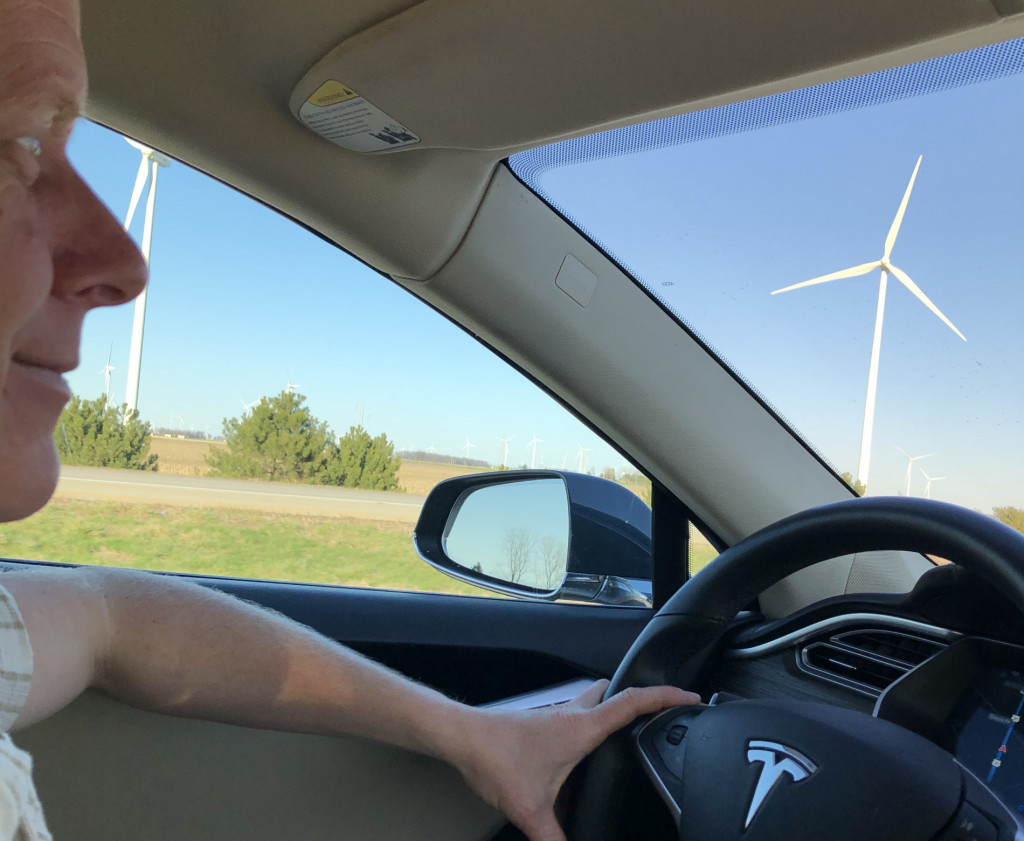
3. While we’re talking about electricity, do you know where yours comes from? Electricity in the US is generated, on average, from the following resources (all of the following info is from US Energy Information Administration (EIA) which has a lot of great resources if you want to learn more):
- 40% natural gas
- 19% coal
- 20% nuclear
- 20% renewables (like wind, solar, and hydro)
- 1% petroleum
If you want to get more specific to your state or electrical grid, you can learn more here (it’s another great page on the EIA website). Learning more about electricity is great, but my recommended action here is to call your electric utility company and request 100% renewable electricity. Most utilities have a program that lets you pay a little extra (for reference, my monthly bill increased $10 when I made the switch) for 100% renewable electricity. I know… you have lots of questions… like “how can I just buy renewables? Am I actually getting renewable electricity delivered to my house???”
The short answer is this: when you subscribe to green electricity programs like this you’re incentivizing your local utility to invest in more renewable electricity projects. This means they’ll build more solar arrays or install more wind turbines. You’re really buying a renewable electricity credits, which means that an equal amount of “extra” green electricity is being produced on your behalf. No, the utility can’t send this electricity directly to your house, but you are part of the overall move to a greener and more renewable electricity grid and you are voting with your dollars every single month. Still have questions? Drop them in the comments below and I’ll help you find the answer!
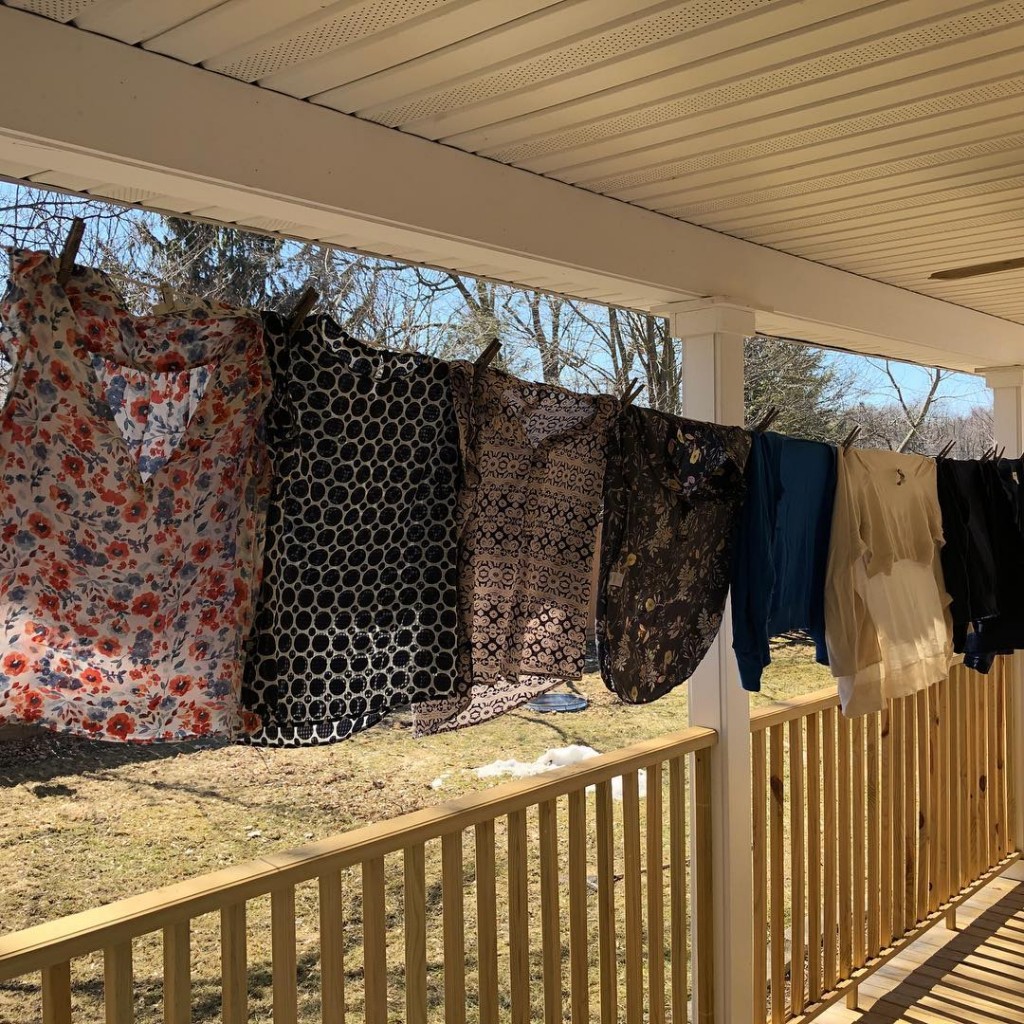
4. Embrace minimalism. Do you really need all the stuff in your life? Does it really make you happier? For me, minimalism is a great mindset to truly embrace the Reduce in the decades old mantra “Reduce. Reuse. Recycle.” Yes, recycling is important and you should do that too, but moving beyond recycling and buying less stuff is where the magic happens when trying not to destroy the planet.
Think about it this way: every single thing you own was created from the Earth’s precious resources. These resources were mined, grown or harvested from somewhere, transported to a processing site where they were turned from the raw material into a more usable form, transported to another manufacturing site where they were combined into the thing in your hands, transported to a store or warehouse, and then transported again to you. And that’s probably an oversimplified version of the truth. This happens over and over again for every single object in our lives. With this in mind, I ask again… Do you really need all the stuff in your life? What could you choose to live without? What would actually make you happier NOT to own?
If you’re ready to embrace minimalism, there are TONS of resources out there for you to explore, but some of my favorites include: The Minimalists blog, the book Soulful Simplicity by Courtney Carver, and the Our Minimalist Lifestyle Facebook Group. Please share your favorite resources in the comments!

5. Stop wasting food. Each year, the average American throws away more than 200 pounds of food at a cost of more than $1,600 per family! And if food waste were a country, it would be the third largest emitter of greenhouse gases (GHGs, the major cause of climate change), behind the Unites States and China. Farming of meat animals and food transportation are additional contributors of GHG emissions, so I’ll give bonus points for eating less meat and more local food.
There are lots of great strategies you can use to reduce food waste in your home. Some of my favorites include
- create a weekly meal plan
- buy less during each trip to the grocery store
- organize your food storage areas (fridge, pantry, freezer) so you can find your food easier
- learn about best by, use by, and other perishable food labels to avoid spoilage
- freeze leftovers and other perishable items before their expiration date
Here they are, all together once more:
- Drive less, walk and bike more
- Buy the most efficient car you can afford
- Buy renewable electricity
- Embrace minimalism
- Stop wasting food
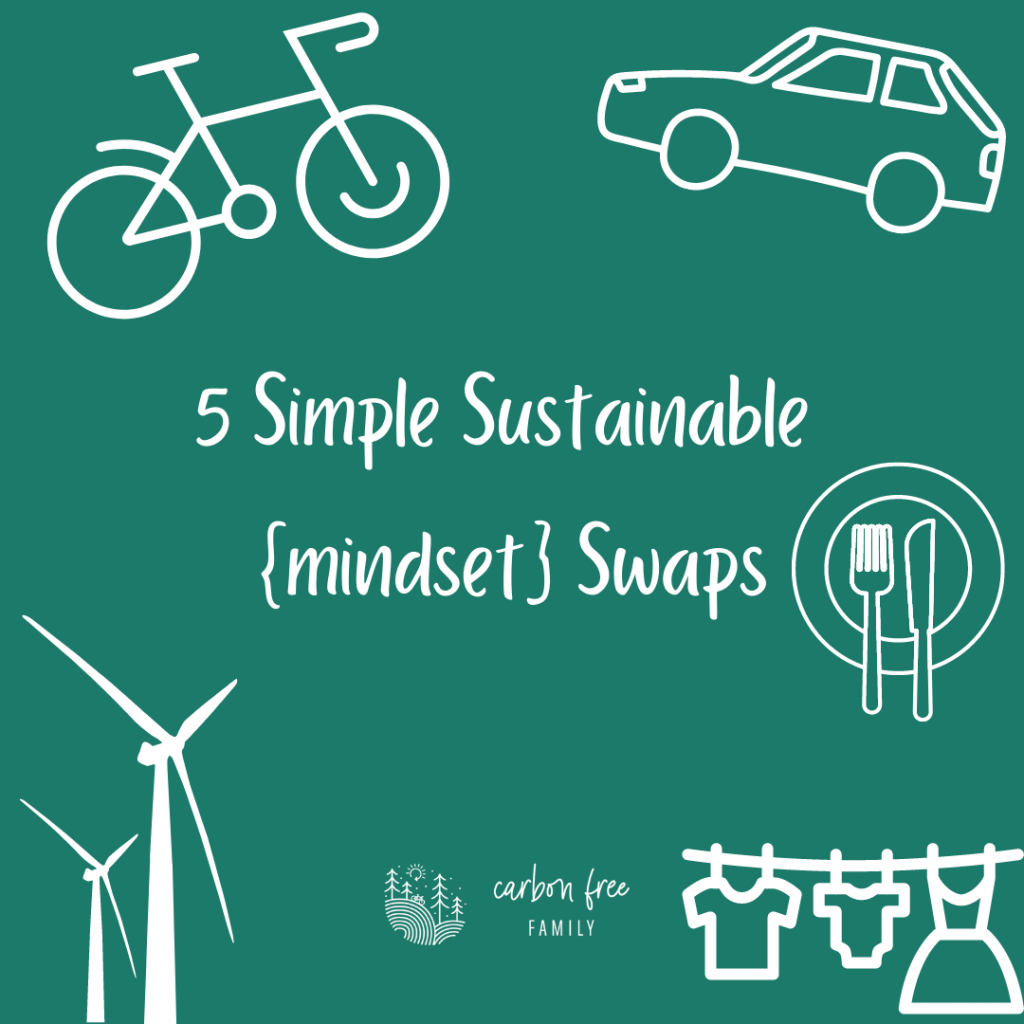
Do some or all of these recommended {mindset} swaps resonate with you? Share your thoughts and experiences in the comments!
Looking for more? If you’ve already made these swaps and are ready to make deeper change, I highly recommend calculating your ecological footprint and using the results to identify your biggest opportunities.
]]>
